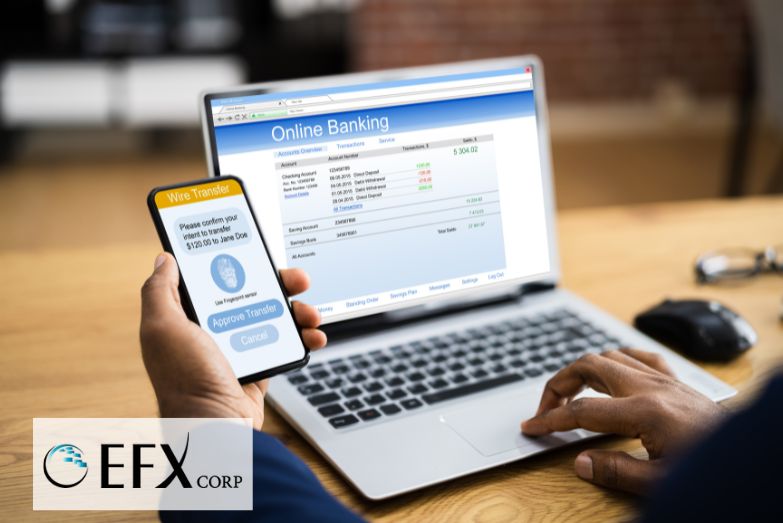The differences between ACH and bank transfers. Everything you need to know.
When businesses move money electronically, they often talk about “bank transfers” and “ACH payments.” While these terms are sometimes used interchangeably, there are important differences, especially when it comes to ACH payment processing. Bank transfers refer to any movement of funds between bank accounts, including wires, ACH payments, internal transfers, or external bank-to-bank methods.
ACH transfers, however, specifically use the Automated Clearing House network: a secure system that processes batches of electronic payments in the U.S., including direct deposit payroll, tax payments, vendor disbursements, recurring bill payments, and more. Understanding the distinctions can improve the speed, security, and efficiency of your payment workflows.
Let’s clarify the differences so your organization can choose the most suitable payment processing methods.
Key Insights:
- ACH payments are a type of bank transfer, but not all bank transfers are ACH.
- ACH payment processing uses a secure network, is customizable, and offers same-day or next-day options for recurring payments, payroll, vendor payments, and more.
- Wires are faster for urgent, high-value, or international transfers but cost more.
- Advanced ACH platforms offer robust controls, analytics, compliance, and support for banks and clients.
- The right payment method depends on your business’s speed, security, and use-case needs.
What is an ACH Payment?
An ACH payment is an electronic fund transfer made through the U.S. Automated Clearing House network. ACH payment processing allows businesses and individuals to send and receive payments quickly and securely between banks and credit unions.
ACH payments encompass:
- Direct deposit payroll
- Tax payments & vendor disbursements
- Benefit contributions & insurance premiums
- Membership dues & subscription fees
- Bill payments and recurring payments
The ACH network batches transactions and processes them usually within one to two business days. However, same-day or next-day ACH payment options are now available, making it even faster and more efficient.
What is a Bank Transfer?
A “bank transfer” is any process where money moves from one bank account to another. This includes several methods:
- ACH transfers: Managed by the ACH network, usually for domestic transactions
- Wire transfers: Sent directly and typically arrive within hours; often used for international or urgent transactions
- Internal transfers: Moving funds between accounts at the same financial institution
- External transfers: Moving funds between accounts at different banks, which may or may not use the ACH network
- Bill pay and electronic payments: Banks often offer bill payment features using various underlying methods, including ACH
Key Differences Between Bank Transfers and ACH
While “bank transfer” is a broad term, “ACH” refers to a specific, regulated, and highly adopted method of payment processing. Here’s how they compare:
ACH Payment Processing
- Uses the Automated Clearing House network for batch processing of electronic payments
- Supports ACH credits (sending funds) and ACH debits (pulling funds)
- Secure and reliable, backed by data encryption and compliance monitoring
- Typically takes 1–2 business days, but now has same-day options
- Supports multiple transaction formats (PPD, CCD, CTX)
Other Bank Transfer Methods
- Wire transfers are instant but costly, lack recall options, and are used for large or international transfers
- Internal transfers happen instantly within the same bank
- Paper checks are slow, manual, and prone to error or fraud
Main considerations:
- ACH is best when you want affordable, recurring, and secure electronic payments, such as for payroll, vendor disbursements, or membership dues.
- Wires are better for one-time, large, urgent, or international transfers.
- Internal bank transfers are limited to your accounts within one institution.
Common Uses for ACH Payment Processing
ACH payment processing is widely used for:
- Direct Deposit Payroll: Paying your employees quickly and securely
- Tax Payments & Vendor Disbursements: Automating obligations to the IRS and suppliers
- Benefit Contributions & Insurance Premiums: Handling recurring payments with ease
- Membership Dues & Subscription Fees: Automating monthly or annual payments
- Bill Payments: Managing regular accounts payable workflows
ACH payments are preferred by many professional employer organizations (PEOs), human capital management companies, payroll processors, CPAs, and accounting services due to their speed, reliability, and trackability.
Understanding ACH Payment Formats
ACH payment processing is highly customizable, supporting various transaction formats to fit different use cases:
- PPD (Prearranged Payment and Deposit): For consumer transactions like direct deposit
- CCD (Cash Concentration or Disbursement): For business-to-business (B2B) payments
- CTX (Corporate Trade Exchange): For complex B2B payments with addenda information
Advanced ACH solutions offer:
- Customizable reporting and analytics tools
- Real-time access for clients and administrators
- Automated information delivery (emails, exports, alerts)
- Online account statements and reconciliation tools
- Secure user roles and access control
Benefits of Using ACH for PEOs and Payroll Processors
Businesses using ACH payment processing enjoy several advantages:
- Fast and Efficient: Process payments in batches, reducing manual effort and errors
- Secure and Reliable: Industry-standard data encryption and compliance monitoring
- Fully Customizable: Support for multiple transaction types and formats
- Backed by Human Support: Access to knowledgeable professionals when you need help
- Automated Workflows: Simplify recurring payment tasks and disbursements
- Lower Costs: ACH payments are less expensive than wire transfers or credit cards
- Scalable: Easily process high transaction volumes or handle complex use cases
FAQs
- How long do ACH payments take to process?
Most ACH payments settle within one to two business days, with many providers now offering same-day ACH processing for an added fee.
- Are ACH payments safe and secure?
ACH payment processing uses data encryption, compliance monitoring, and strict access controls to protect your transactions.
- Can ACH handle recurring payments?
ACH is ideal for recurring payments, including payroll, membership dues, subscription fees, and bill payments.
- What information is required to initiate an ACH payment?
Typically, you need the recipient’s bank account and routing numbers, the amount, and the payment date.
- What’s the difference between an ACH debit and an ACH credit?
An ACH credit pushes money from the sender to the receiver (e.g., payroll), while an ACH debit pulls money from the receiver’s account (e.g., bill payment).
Take Your ACH Payment Processing to the Next Level with EFX Services
If your organization values fast, reliable, and customizable ACH payment processing, with robust reporting, automation, security, and dedicated human support, look no further than EFX Services. As a leading provider of ACH solutions, EFX ensures that your business stays ahead with cutting-edge technology and unparalleled customer service.
Contact us today for a free quote and experience the benefits of efficient payment processing.



